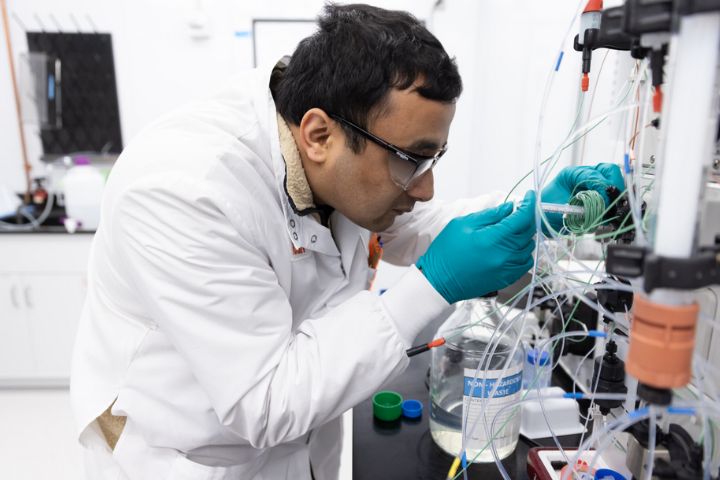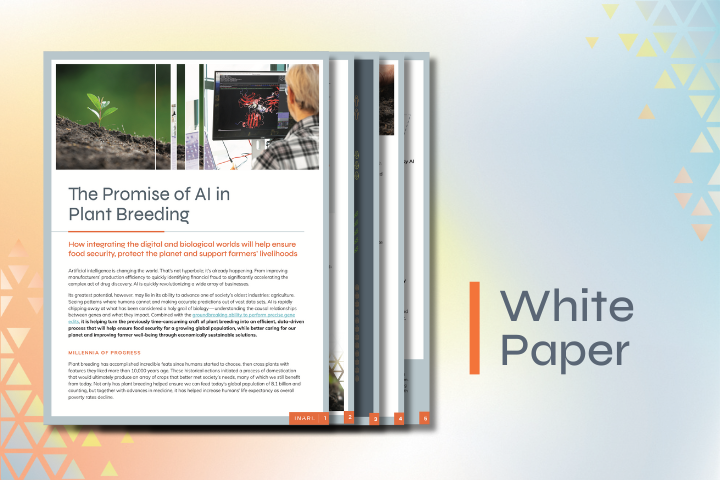By Anya Gandy
Sustainability & Corporate Strategy
–
Happy National Agriculture Week! This and every week, I celebrate the essential workers that steward our farmland and bring food to the worldwide table. Raised on a small family farm, I understand the unrelenting and rewarding responsibility that caring for land and animals brings. A responsibility that hangs heavier as climate change challenges mount.
We stand together at a crossroad. Surrounded by passionate people and innovative solutions at the recent World Agri-Tech Innovation Summit, I saw seeds of a future with clean air, drinkable water, fertile soil and nourished bellies despite climate challenges. The food system changes we inspire today will ripple far past fence lines to Wall Street boardrooms and Main Street tables.
What investors, startups, companies and policymakers alike are grappling with is how to ensure the impacts of today’s innovations and actions are not only positive, but optimized. Getting to the bottom of this question requires understanding system structures, behavior and dynamics over time. With that analysis, the most powerful levers of change can be pulled in the right direction.
History abounds with the consequences of well-educated, well-intentioned actions making problems worse — or creating new ones. (An experience each of us has undoubtedly had in our own lives.) Put another way, we want our actions to have the power of a wolf reintroduction without the Cobra Effect.
Additionally, simply achieving a positive impact return is a far cry from achieving the greatest return. We have a climate change needle to thread; maximizing positive impacts while minimizing consequences is essential.
A dearth of good tools to calculate expected impacts, an impact net present value (NPV) if you will, plagues all industries. Flawed impact assessment methods are not only unhelpful, they can be actively harmful (as the Cobra Effect highlights). ESG ratings, for example, are fast becoming the latest in greenwishing couture. To be fair, this is in part due to a misunderstanding — but it is one with serious consequences. Most ESG ratings are trying to assess economic risks from ESG factors, not the E and S impacts a company is really having in the world.
This status quo is not compatible with Inari’s bold vision of operating as a nature-positive organization. Net zero is not enough. And “reporting is not a proxy for progress,” as Berkshire Partners’ Ken Pucker succinctly put it.
Real positive change requires understanding the ripple effects we will have across intertwined agricultural, ecological and financial systems. At Inari, we do this by going beyond standard evaluations that focus only on Scope 1 and 2 emissions — typically a very small portion of companies’ total emissions. Instead, leveraging MIT’s Dynamic System Modeling (DSM) in a novel way, we are quantifying the expected direct and downstream effects of Inari seeds.
In addition to being well-proven, DSM is robust, user-friendly and flexible, requires minimal data and is impressively cost-effective. At Inari, models for target crops will be embedded in our core business value creation mechanisms, starting with our product development pipeline.
In action, the model will allow us to input product ideas like 10% higher-yielding corn, outputting likely levels of change across runoff rates, emissions, land use, farmer profit, etc. The model can also calculate the best products to achieve a target — for example, reducing nitrous oxide emissions by 15%. This impact NPV is evaluated right alongside a standard financial NPV.
As our CEO Ponsi Trivisvavet often says, we only have one lifetime — this lifetime — to do something about climate change. Our hope is that, in addition to helping us plot our own path to a nature-positive impact, this work can inspire other companies and organizations to also adopt the DSM method. (Expanding the innovation pipeline of nature-positive entrepreneurs is one of the primary reasons we’re helping to lead the World Economic Forum’s 100M Farmer Coalition.)
We have the capacity for great change, as individuals, industry and society. With a well-informed roadmap leveraging the best knowledge and tools, I am confident that we will continue to celebrate National Agriculture Week for generations to come.
Anya is Sustainability Lead and Corporate Strategy at Inari. Interested in learning more about the DSM methodology and/or applying it at your organization? Contact us.
RELATED POSTS
Inari’s Labs Achieve ‘My Green Lab’ Certification
We have a deep commitment at Inari to food system sustainability, which in addition to prioritizing food security and improved farmer well-being puts a focus on better caring for our…
An October Reflection on Food System Sustainability
By Jamie SaxonHead of Sustainability – Harvest season is in full swing in the U.S., a time of year that’s equal parts exciting, nerve-wracking and busy for farmers as they…
The Promise of AI in Plant Breeding
Artificial intelligence is already changing the world. Its greatest potential, however, may lie in its ability to advance one of society’s oldest industries: agriculture. Seeing patterns where humans cannot and…



